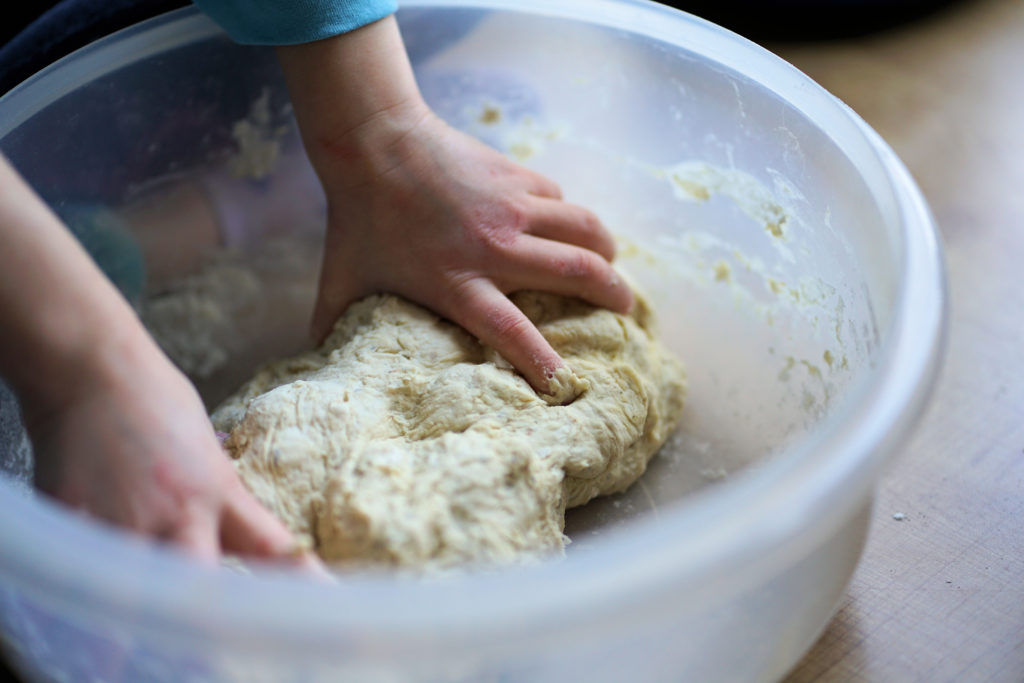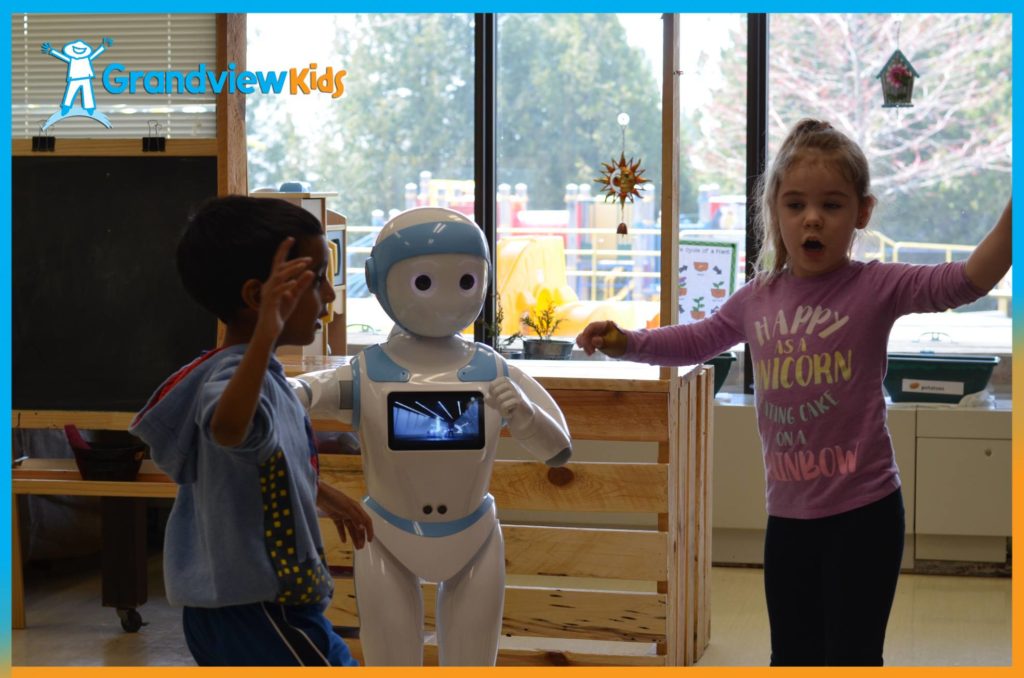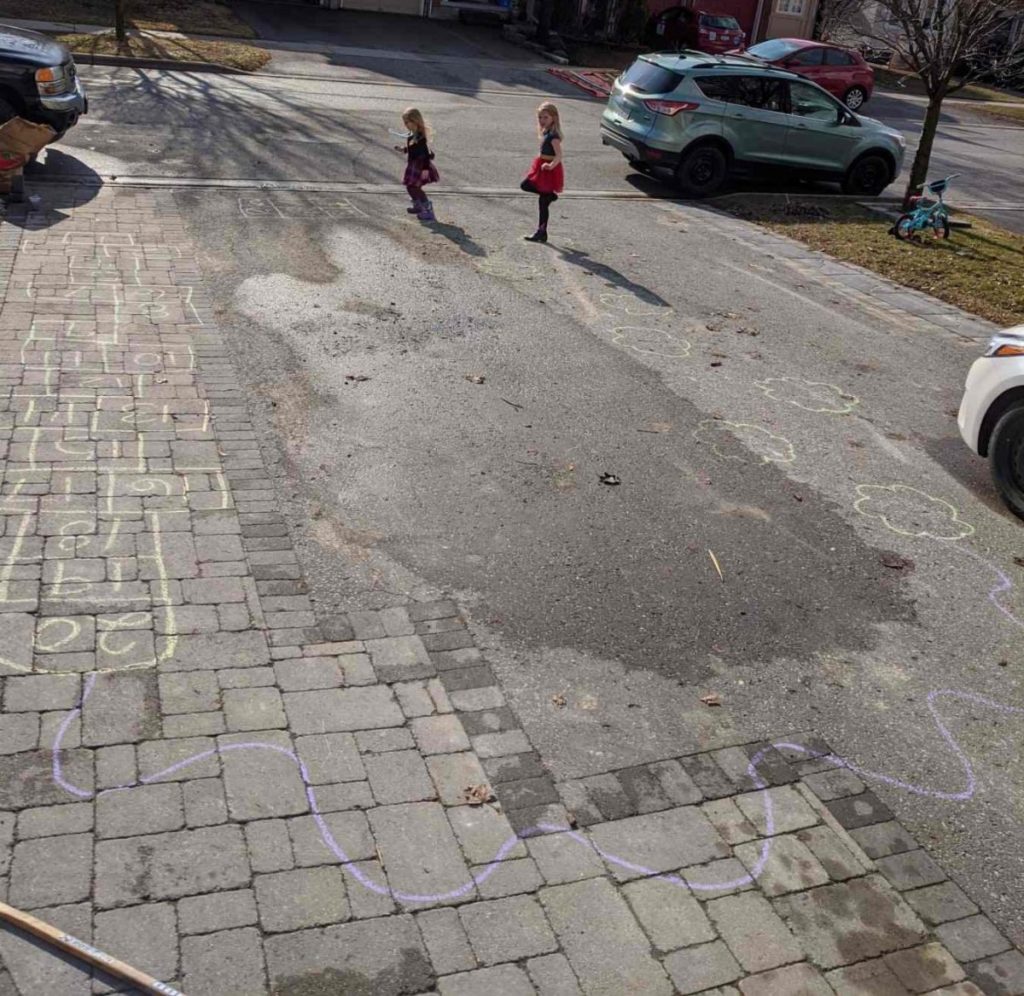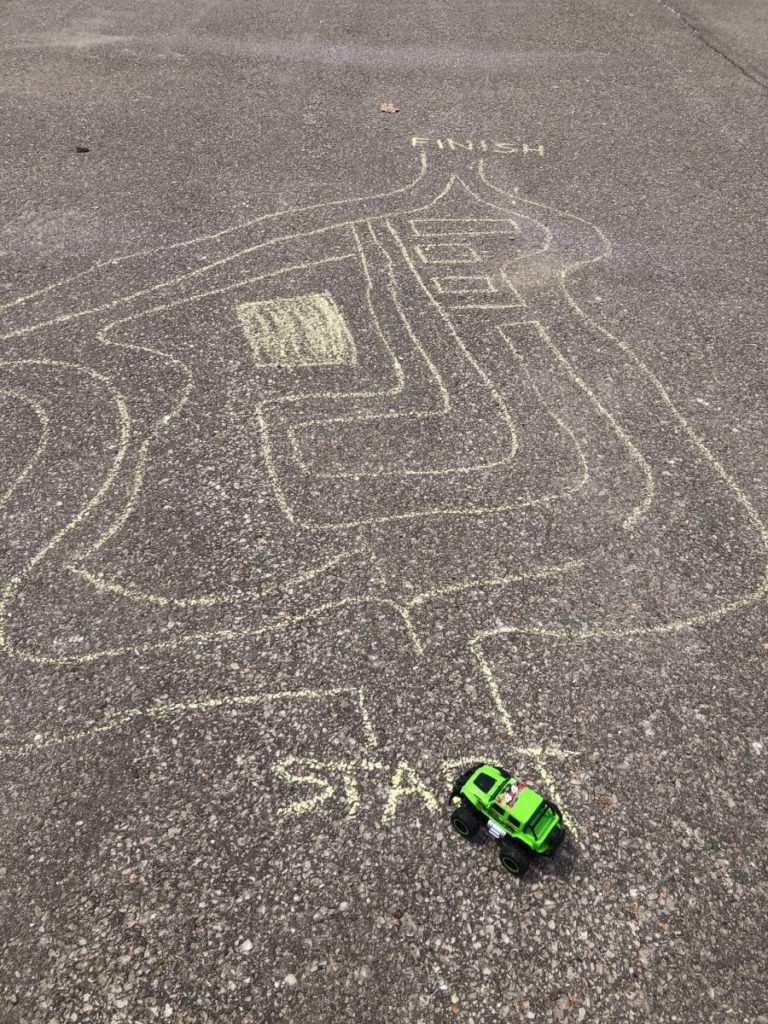Hand strengthening and grasp
Bath time
- Squeezing sponges or wringing out washcloth during bath
- Playing with squirt toys at bath time
Housekeeping
- Squeezing spray bottles to help water plants or clean table/counter tops
- Crumpling paper and folding up boxes for recycling
- Lifting, carrying or dragging a full toy bin or laundry bin with handles
- Squeezing clothes pegs to hang up towels/clothing items to dry
- Pulling linens off the bed
Meal Prep/ Mealtime
- Helping with kneading cookie/bread dough when making baked goods
- Using kitchen tongs to help serve food at mealtime
- Scooping out mashed potatoes or cooked rice onto family member’s plates

Outdoor time
- Doing animal walks on the grass e.g. bear, crab, seal etc.
- Storing and translating small rocks/pebbles from palm to finger pads to throw rocks into the lake
Pre-printing and printing
Bath time
- Drawing and/or printing with soap or soap crayons on the wall
Housekeeping
- Helping to hand write the grocery list
Meal prep/ Mealtime
- Making letters out of cooked spaghetti noodles
- Printing out meal menu or drawing items for a meal and posting it on the fridge
Outdoor time
- Finding sticks in the park and making letters with them, or drawing letters in gravel/sandbox using a stick
- Forming letters or drawing a picture using rocks
- Sidewalk chalk
Self care
Bath time
- Participating in dressing and undressing
- Participating in scrubbing body with a loofah and body wash, or washing hair
Housekeeping
- Using a toothbrush to scrub objects clean
- Grooming toys such as doll’s hair
Meal/Meal prep
- Playing tea party with dolls i.e. setting up plates, serving snacks
- Participating in cooking activities
Outdoor time
- Participation in dressing and undressing to go outside
- Putting snacks into a container or zip lock bag
- Making mini sandwiches
- Filling up a water bottle
Miscellaneous
- Take advantage of the time you have at home for potty training
Executive functioning/organization
Bath time
- Set up a bath towel, clothing to be changed into, and bath toys
- Follow a routine or part of a routine – i.e. lay out clean clothes, bathe, get dressed, place dirty clothes in the hamper, brush teeth
Housekeeping
- Encourage making their own bed each morning
- Doing and folding laundry, sorting then putting them back in the respective drawers
- Sorting the garbage, recycling and compost
- Vacuuming, sweeping, mopping, wiping windows/mirrors

Meal prep/mealtime
- Gather and organize ingredients for a recipe
- Assisting with set up and clean up of all meals
Outdoor time
- Set up instructions for a scavenger hunt
- Plan a route to the park
- Build a figure using sticks and rocks
- Build a fort or set up an obstacle course
Self-regulation/sensory-based activities
Bath time
- Blowing bubbles during bath time
- Wading through the bath water
- Filling and pouring water with a pail
Housekeeping
- Taking out the garbage/recycling/compost
- Carrying the laundry basket to the laundry machine
Meal prep/mealtime
- Stirring cake, pancake, cake/cookie batter
- Eating a crunchy snack
- Sipping liquids from a straw
Outdoor
- Running
- Biking
- Scootering
- Playing catch
- Handball
- Kicking a soccer ball
- Street hockey
Miscellaneous
- Climbing stairs
- Playing Simon stays
- Rough-housing with parent or sibling
- Making an obstacle course
- Having a dance party
- Tortilla roll in a blanket (with supervision)






